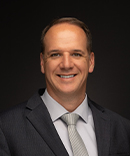By Mark Ziety, CFP®, AIF®, Financial Advisor, WisMed Financial

Good financial planners do much more than help with investments. They look at the entire financial picture, which includes debts too. Today’s case study shows how a unique rule, available until December 31, is facilitating more than $600,000 in student loan forgiveness.
First, the rule
When consolidating federal student loans, according to the FAQ section on the Federal Student Aid website, “Assuming your repayment history overlaps for each loan, the consolidation loan will be credited with the longest amount of time in repayment of the loans that were consolidated.”
How we applied the rule
A resident physician is a career changer with more than $600,000 of student loan debt. Some of the debt was from undergrad loans from the early 2010s before she changed careers to become a physician. By consolidating her old and most recent loans together, her new consolidation loan will use the payment count of her oldest loans.
The $600,000 loan forgiveness benefit
Those who work for a non-profit, government or other qualifying employer can have any remaining balance of their student loans forgiven after making 120 qualifying monthly payments through the Public Service Loan Forgiveness program. And the loan forgiveness is tax free! Since this borrower will have 120 qualifying payments on the oldest loans, her consolidation loan will also be credited with 120 qualifying payments, and her entire loan balance will be forgiven!
The rule changes in 2024
Next year, a consolidation loan will have a pro-rated payment count based on the payment count of the loans being consolidated. That makes 2023 an ideal time to review your loans to see if a consolidation would benefit you too.
For personalized help eliminating debt, investing smart and securing retirement, please contact Mark Ziety, CFP®, AIF® 608.442.3750.
Mark Ziety, CFP®, AIF®
WisMed Financial, Inc. part of the Wisconsin Medical Society
Note: This article is for informational purposes only and should not be considered as financial or tax advice. Please consult with a qualified financial advisor or tax professional before making any financial decisions. Full disclosures.
